Last updated: January 12, 2025
Article
Chattahoochee River National Recreation Area: Cleaning Up After Your Dog Helps Keep Our Waters Clean
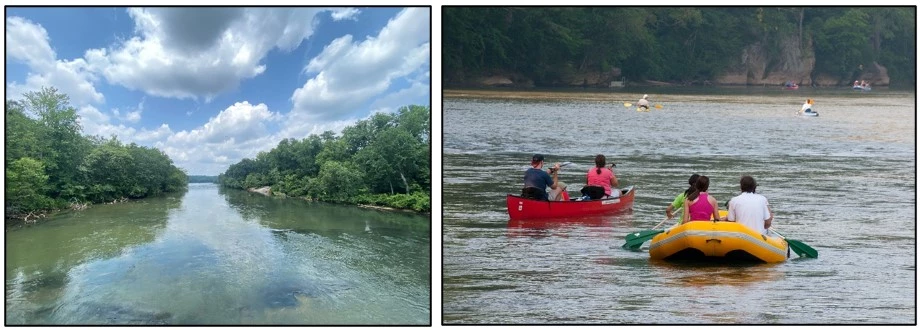
NPS Photos
Approximately 6,800 acres of upland forests and wetlands that buffer a 48-mile stretch of the beautiful Chattahoochee River—from Buford Dam to Peachtree Creek—are part of the Chattahoochee River National Recreation Area. The recreation area is a popular destination in the Atlanta area and received 3.5 million visitors in 2022. The park offers green space for walking and picnicking and many opportunities for water-based recreation, such as swimming, fishing, tubing, rafting, and kayaking. The Chattahoochee River also provides 70% of metropolitan Atlanta’s drinking water. The protection of water quality in the recreation area and elsewhere in the watershed is important for people, fish, and wildlife, but the quality of the water is being impacted by improperly disposed-of dog waste.
Pets are welcome in Chattahoochee River National Recreation Area, including on park trails, but there are important rules to follow. Fines can be imposed for not complying with these rules in the recreation area:
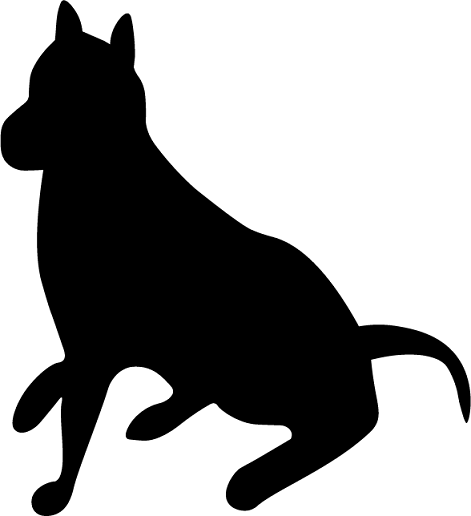
- Have your pet leashed (6-ft or shorter leash) at all times.
- Clean up your pet’s waste, and dispose of it in an appropriate waste bin or take it home.
- Do not leave your pet unattended.
In some metropolitan Atlanta cites, it is also required by local law to pick up dog waste in public places.
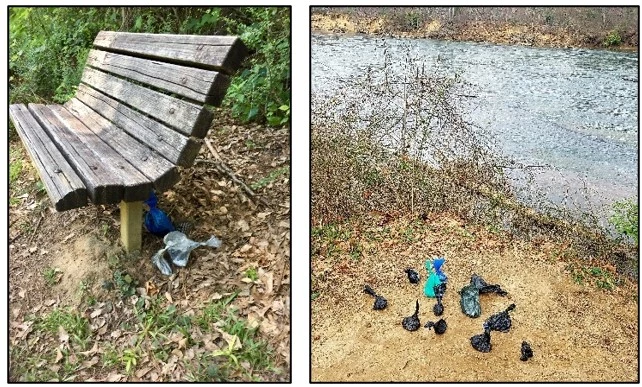
© Sally Bethea.
What is the evidence for the water quality-dog waste connection?
Escherichia coli (E. coli) are microscopic organisms that live in the intestines and are shed in the waste of warm-blooded animals, such as humans, dogs, and cats. Chattahoochee River National Recreation Area managers regularly test the Chattahoochee River for levels of E. coli to monitor for signs of fecal contamination, which can carry pathogens and cause illness in people and animals who are exposed. A previous study on sources of fecal contamination in the recreation area watershed indicated that dogs are frequent contributors of the contamination (McKee et al. 2020). The study found that levels of dog contamination (determined by screening samples for canine fecal genetic markers) were correlated with E. coli concentrations. The fact that dog contamination was detected in tributaries throughout the watershed (and that flow into the recreation area) also indicated that at least some of the contamination in the river was coming from locations outside the recreation area.To better understand the origins of fecal contamination outside the Chattahoochee River National Recreation Area, a 2023 NPS and U.S. Geological Survey (USGS) study (conducted under the NPS Natural Resource Condition Assessment Program) sought to determine whether dog parks in the recreation area watershed were sources of dog fecal contamination in watershed streams. The researchers looked at associations between levels of E. coli and distance to and/or density of dog parks in the watershed (see figure below). Study results included that E. coli levels in the summer and winter were positively correlated with the number of dog parks within the watersheds (McKee and Couch 2023). Confounding factors in the study, however, indicate that future work is necessary to understand whether the correlations are coincidental or because dog parks are sources of fecal contamination.
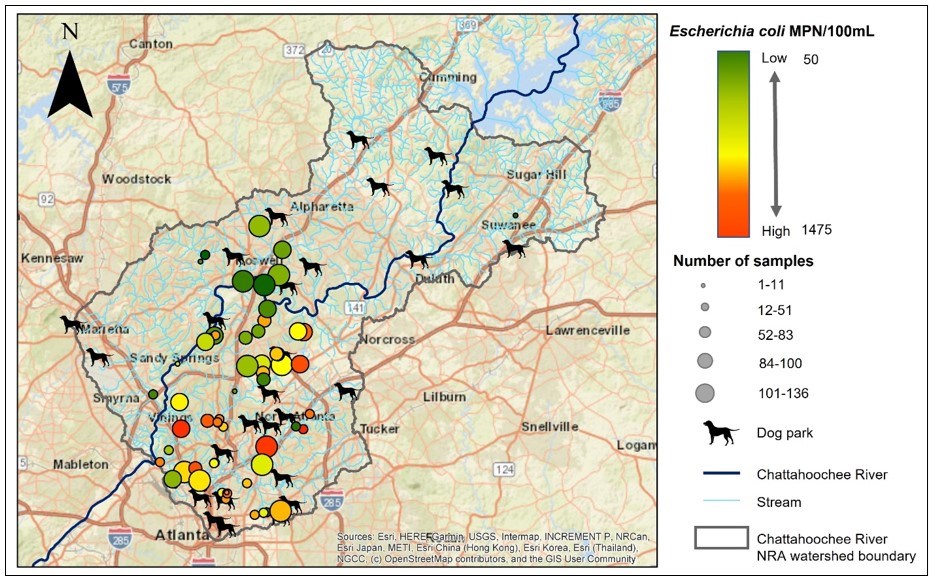
Map modified from McKee and Couch [2024].
What is Chattahoochee River National Recreation Area doing to help?
In addition to working with other federal agency researchers to study the issue, recreation area staff partnered with the Chattahoochee National Park Conservancy to place dog waste stations in the recreation area at major trailheads. The stations provide clean bags and waste bins for proper waste disposal (see photo series below). These stations will help you bag and bin it!
Also, the BacteriALERT program—a collaboration between Chattahoochee River National Recreation Area and its partners (see reference section)—collects weekly E. coli samples at three sites on the Chattahoochee River within the recreation area. These data are published on the BacteriALERT website, which also provides near real-time estimates of E. coli to recreational users of the river within the national recreation area.
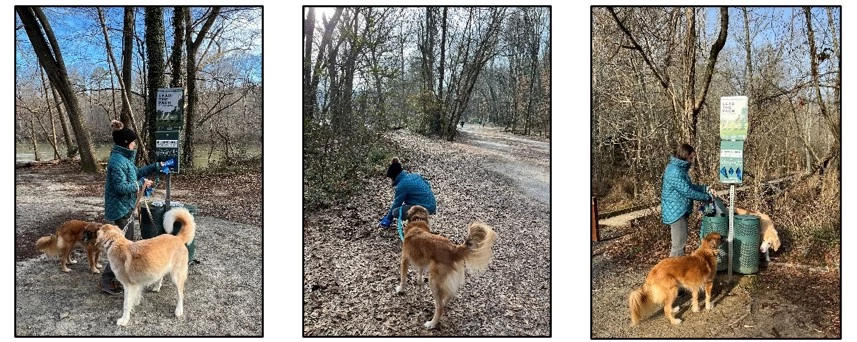
© Anna McKee
What You can Do to Help

- Lead the Pack from Bag to Bin and pick up and properly dispose of your dog’s waste when in the national recreation area, dog parks and other public places, and your own yard. You’ll be helping to keep our waters cleaner and healthier for people, pets, fish, and wildlife.
- Visit the Cobb County (Georgia) webpage on pet waste, which provides information on pet waste, opportunities to take a “Pick It Up Pals Pledge” and register your pet as a Pick It Up Pal, and other information on ways to get involved.
- See the Chattahoochee National Park Conservancy webpage for more on “bagging and binning it,” dogs in the Atlanta area, and development of the bag to bin campaign.
- The City of Roswell has a similar webpage that describes their campaign to help improve water quality in area streams. The webpage also notes that it is the law in the City of Roswell to clean up after your dog in public places. [It’s worth visiting this webpage for the photo of the cool little canine alone, but why not get some important information at the same time!].
-
For information from the National Park Service on hiking with pets, including a map that shows national parks that allow pets, visit I Didn’t Know That!: Hiking with Pets.
References
BacteriALERT Monitoring site This U.S. Geological Survey (USGS) site contains information on BacteriAlert near real-time monitoring, water sampling sites, and bacteria. The BacteriALERT program is a public-private cooperative project between the National Park Service, Chattahoochee National Parks Conservancy, Chattahoochee Riverkeeper, Cobb County Water System, and USGS.McKee AM and Couch A. 2024. Land use and dog park associations with Escherichia coli in the Chattahoochee River National Recreation Area watershed. Science Report. NPS/SR—2024/113. National Park Service. Fort Collins, Colorado. https://doi.org/10.36967/2302755
McKee, A., M. Molina, M. Cyterski, and A. Couch. 2020. Microbial source tracking (MST) in Chattahoochee River National Recreation Area: Seasonal and precipitation trends in MST marker concentrations, and associations with E. coli levels, pathogenic marker presence, and land use. Water Research 171:115435.
Also see Chattahoochee River National Recreation Area’s NRA’s previous article on dog waste in the national recreation area.

